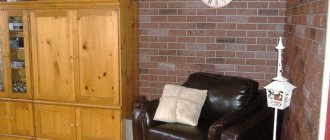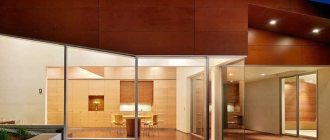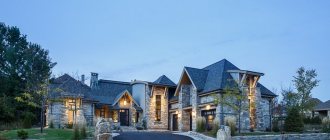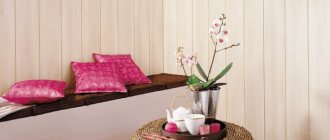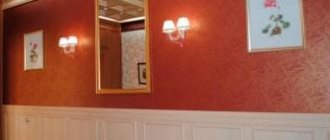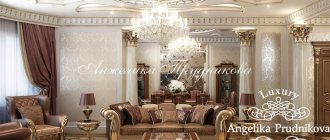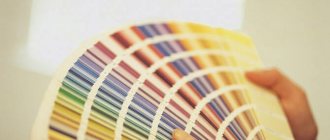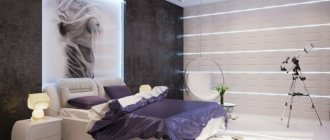Brick houses are a long-standing construction “tradition” that has held its position for more than 150 years. This is why most often you can find so many brick houses in cottage villages. However, time does not stand still, and the building materials market offers the modern consumer a material with analogue thermal insulation properties in the form of foam blocks. At the same time, the cost of aerated foam concrete is much lower than that of standard brick. And it takes less to lay walls than bricks. And the standard exterior of such a foam block house can be formed if you use wall siding or basement brick siding to cover the façade.
What is siding?
This type of cladding consists of panels that imitate brickwork
This type of cladding consists of panels that imitate brickwork. At the same time, on the market you can find both siding for facing bricks in a yellow shade, and facade siding for ceramic bricks in red, black or dark brown shades. Fortunately, the color range of the wide selection of collections of such cladding is quite diverse.
Important: buildings made of any wall material can be covered with siding. Insulated walls made of either foam blocks or timber will feel equally comfortable under the panels.
Positive aspects of decorative siding with imitation brick
Houses covered with brick siding are reliably protected from the negative effects of rain, sun, frost and wind
To get an attractive exterior of a building when covering it with siding panels, it is necessary to correctly install them. And if the work is carried out accurately, the developer receives a number of advantages:
Log siding for exterior finishing
- Siding panels perfectly protect the material insulating the walls of the house, which is located under the cladding. In addition, houses covered with brick siding are also reliably protected from the negative effects of rain, sun, frost and wind. This means that the wall material will not collapse.
- When covering a house with brick siding, it is difficult to see the difference from natural brickwork. Especially from a distance. The fact is that all panels are produced using precision stamping, adjusting the joints and edges in such a way as to create a monolithic and continuous facade covering without unflattering gaps and seams.
- Installing brick siding is very easy, using the Lego principle. It is enough just to clearly connect all the panels to each other.
- Installing siding panels allows you to get a durable skin that can only be damaged under very strong mechanical stress. Otherwise, neither rain, nor hail, nor strong wind can harm the siding.
- In addition, it is worth noting that decorative cladding of a house with siding is a very practical solution, since it is the imitation of brickwork that allows you to achieve a minimum amount of waste when constructing a facade.
Beautiful examples
Residential buildings covered with siding look beautiful and respectable. Thanks to the huge number of color options, the property owner can design the facade and basement of the house according to personal preferences. Using contrasting colors, the arches and corner part of the building are highlighted. The combination of brick finishing with wood products looks great.
Jpeg
Areas of application for siding with imitation brickwork
The finishing of only the base looks great when plastering and painting the rest of the perimeter of the walls of the house
Such decorative panels can be used not only for exterior work, but also in some cases for interior work. Basically, brick siding is used in the following cases:
- Siding covering the entire perimeter of the house, including the base and columns of the veranda in the same color. Here, red brick or white brick siding can be used, which are most often used in the construction of permanent buildings.
- Finishing only the base while plastering and painting the rest of the perimeter of the walls of the house. This solution looks original, especially if the shades of paint and decorative brick are chosen in the same range (warm or cold).
- Siding finishing material is also successfully used when cladding barbecues. In this case, it is recommended to use fiber cement siding, which does not burn or melt even when exposed to direct fire. Or you can use the same panels to cover the fireplace portal in the house. It will look very natural and luxurious.
- In addition, brick siding can be successfully used when covering gazebos, pavilions and other garden areas, which should look in the same style as brick buildings, without thereby disturbing the harmony of landscape design.
Cement
This type of siding is used both for external cladding of buildings and for cladding walls of private or industrial buildings. This material is made from cement and cellulose fibers. The temperature must be maintained at a very high temperature while mixing the two components. Thanks to this technology, this material stands out for its high strength and durability.
Cement panels also have the following advantages:
- resistance to sunlight, high temperatures, and rotting processes;
- and is also protected from various insects and microorganisms.
Such material will not only withstand temperature changes, but will also withstand exposure to moisture or fire.
Let's sum it up
When choosing a finishing material, it is necessary to rely on such criteria as the type of building and its operating conditions. Each type of facade siding has its own advantages, but the advantages will only be relevant when it is correctly selected depending on the type of building structure.
Types of siding for brick cladding
You can choose decorative siding panels not only by shade, but also by the type of material from which they are made.
You can select decorative siding panels not only by shade, but also by the type of material from which they are made. A modern manufacturer offers the following types of siding for brickwork:
- Brick-look vinyl siding. It is a PVC panel with a cellular structure. Thus, decorative finishing can also be used as a heat insulator that retains air masses in its structure. PVC brick panels are lightweight, perfectly resistant to moisture, frost and sun, non-flammable and non-toxic. In addition, rodents will never live under such cladding. Vinyl siding has proven itself especially well.
Important: as an improved PVC material for facade cladding, the manufacturer offers brick siding with insulation. In this case, the cladding is made of sandwich panels that are thick. When using such material, you do not need to use additional insulation.
- Metal siding for brick. This type of panel is made from galvanized steel or aluminum. In the first case, the cladding is heavier and requires a stronger frame for the panels. But at the same time, metal siding has proven itself excellent when finishing the base. After all, it bears a high load in the form of shock impacts, snow pressure during snowfalls, etc. Metal (steel) basement siding for bricks, photos of which are presented below, are successfully combined with vinyl panels on the walls of the house. It is worth noting that metal siding is completely inert to water, cold and ultraviolet radiation, thereby ensuring a long service life of the skin. Thus, a house lined with metal siding will retain its attractiveness for at least 50 years.
Important: but it is worth remembering that metal decorative panels can create noise in rainy weather.
- Fiber cement panels for brick. This type of siding is the most expensive, but at the same time the most durable. The combination of cement and fiber fibers from which siding is made makes it possible to obtain a strong and monolithic decorative coating that imitates brickwork as naturally as possible. But it is worth remembering that a house finished with fiber cement siding requires strengthening of the foundation. Since the panels put a significant load on the walls.
Features of installation work
Installing siding requires some skill. However, if you strictly follow the instructions provided by the manufacturer, it is quite possible to do it yourself. No specialized or expensive tools are required for installation. You definitely need: a screwdriver, a level, and for metal siding - metal scissors. The installation process includes the following steps:
- Preparing the base surface. As a rule, siding is used in ventilated facades to protect thermal insulation. Therefore, the surface of the walls is predominantly flat. If significant excavation is necessary, the defects are filled with repair mortar.
- Installation of sheathing. The material used is wooden blocks or profiles for drywall. The load-bearing elements are installed vertically, with a step corresponding to the dimensions of the finishing panels.
- Installation of insulation, water and wind insulation;
- Installation of counter-lattice, which consists of pressure strips 1.5-2 cm thick, installed on top of the supporting beam to fix the waterproofing membrane.
- Installation of the starting bar. The quality of the entire finish depends on how correctly the starting level is set. Therefore, its installation should be approached with particular care.
- Decoration of window openings - corner strips of window frames are installed.
- Installation of panels. Fastening the panel starts from the corner of the wall. The panels of the first row are cut at right angles and tucked under the corner profiles. The first panel of the next row is cut in half so that the siding elements are installed with offset vertical seams.
Related article:
Insulation for the walls of the house outside under the siding. How to choose high-quality insulation and what types exist? Read more in a separate publication on our portal.
Installation diagram of siding panels
Important! Regardless of what material the panels are made of, you cannot tighten the screws all the way, and you cannot install siding elements right next to each other. They must have a certain mobility and a small temperature gap.
Related article:
Do-it-yourself siding installation : instructions for dummies with photos, advantages of using panels and their varieties, tips and tricks - in our publication.
Calculator for calculating the quantity and cost of siding per house
Video: installation of facade panels
Several recommendations for decorative finishing of the facade
The facade can be faced either in a single color or in several shades
If you decide to cover the facade with decorative panels in the form of brick, then you should listen to the recommendations of the designers:
Stone siding: types and installation
- So, under no circumstances use brick panels in combination with natural wooden walls. Also, you should not combine wood-look decorative panels with brick-look cladding. The wood-brick tandem is a bad manners in design art.
- The facade can be faced either in a single color or in two shades. But at the same time, it is worth remembering that it is better to lay a lighter color of brick on the walls, and a darker, contrasting color - on the base and corners of the house.
- As another highlight, you can complement the dilution by lining the window openings to match the base and corners of the building.
Important: when purchasing siding for cladding, be sure to track the lot number of each package of material. It is advisable that the entire volume purchased be from one batch. Because the shade may vary slightly from batch to batch.
General recommendations for working with siding
Preparation for the event
Before starting work, an independent assessment of the building façade for the degree of readiness is included. It is necessary to carefully inspect the decorative elements of the system so that there are no problems with fastening in the future. It is worth not losing sight of construction defects. If there is a wall chip or crack, putrefactive or moldy areas are noted on the outside of the building - you should get rid of them immediately. After this, the panel fastening scheme is studied, and the installation tool is prepared.
Installation of material
Facade work is carried out both with the involvement of a team of workers and using our own forces. When working on your own, it is important to follow all the instructions given by the panel plant, otherwise the warranty will expire and the result may be unpredictable. Additionally, it is not necessary to purchase an alta profile. Most often they are included in the product package.
You can lay siding under the brick in several stages. At the first stage, the sheathing is installed, which is mounted using dowels. This is necessary for additional ventilation and hiding uneven walls. Next you should move on to the insulation process. Any material that is used as insulation (expanded polystyrene or basalt wool) is laid between the walls of the building and the bricks of the panel. At the end of the process, they proceed to installing the profiles, after which the direct cladding with artificial bricks begins.
Siding Care
It is best to clean the panels using a damp rag, avoiding using water pressure on the coating
In order for façade finishing to serve for a long time and with high quality, it is necessary to ensure proper care of the coating:
- So, after installation, remove the protective film from the panels and wipe the coating with a dry rag.
- It is best to clean the panels using a damp cloth, avoiding using water pressure on the coating. Because in this case there is a risk of moisture getting under the cladding onto the windproof membrane. This won’t cause much trouble, but still, it’s not worth the risk. Or direct the water stream from top to bottom.
- If scratches are found on the surface of metal siding, you need to clean the damage, prime it and paint it with paint to match the entire cladding.
- If the panel is damaged, you can simply remove it and replace it.
Video:
